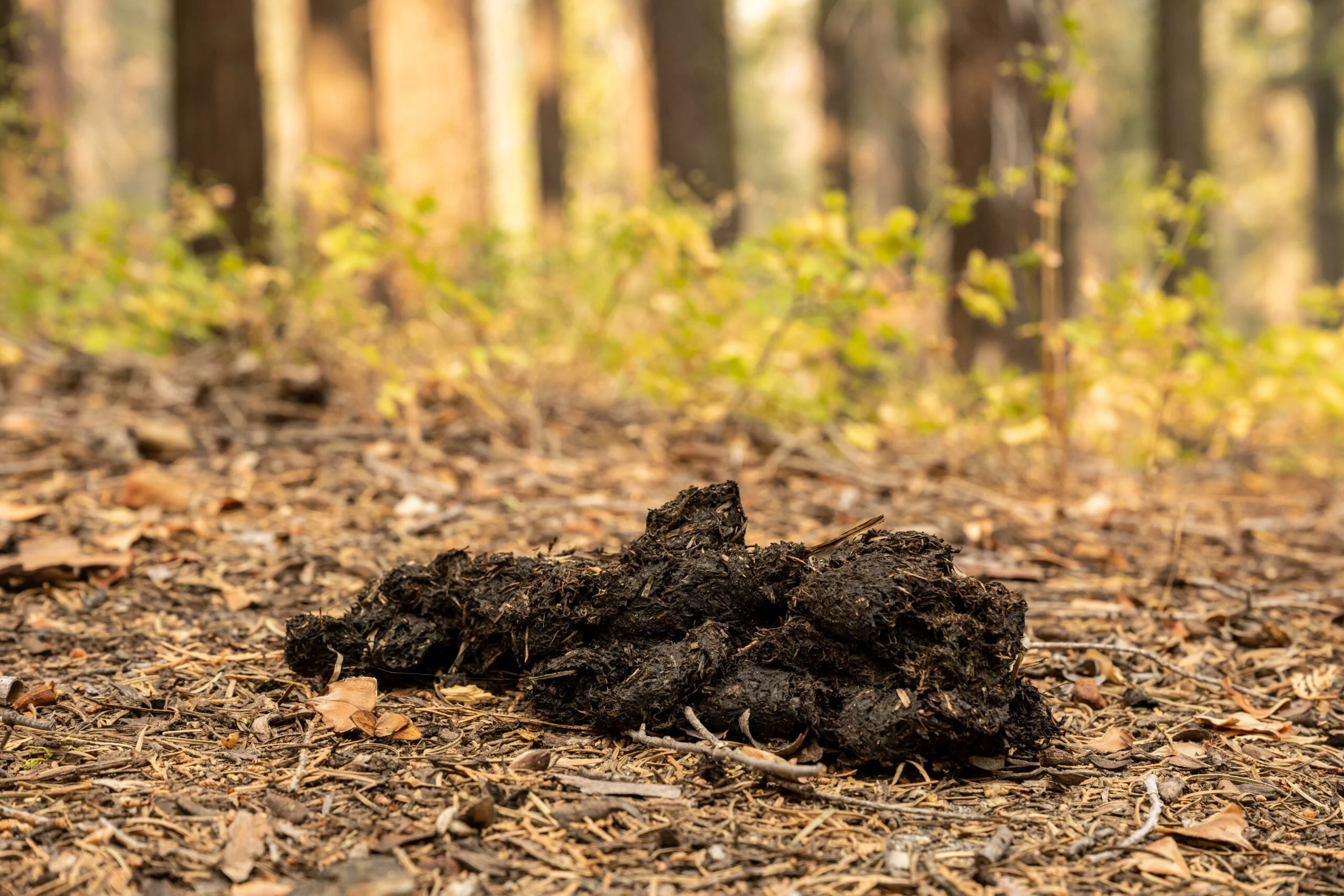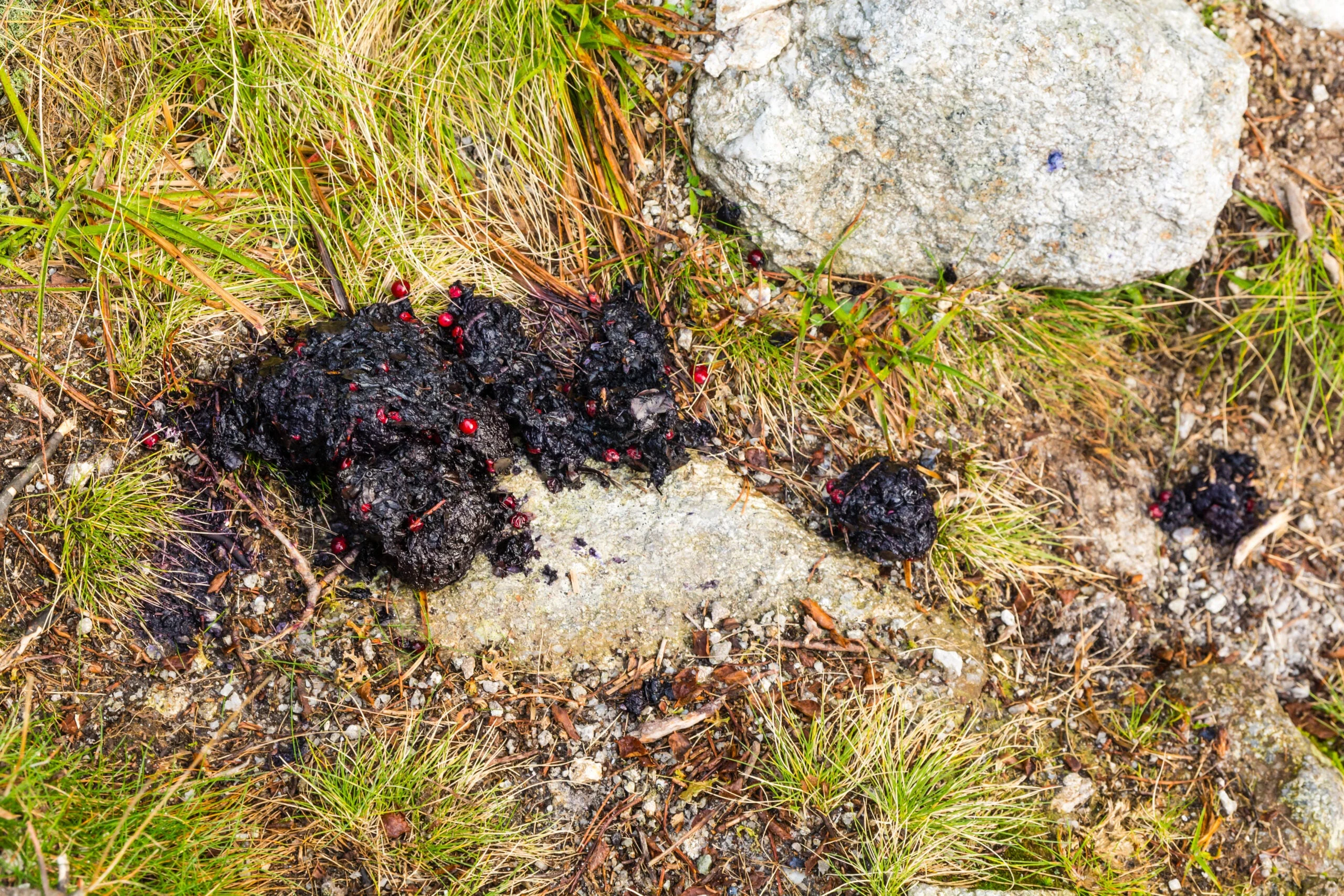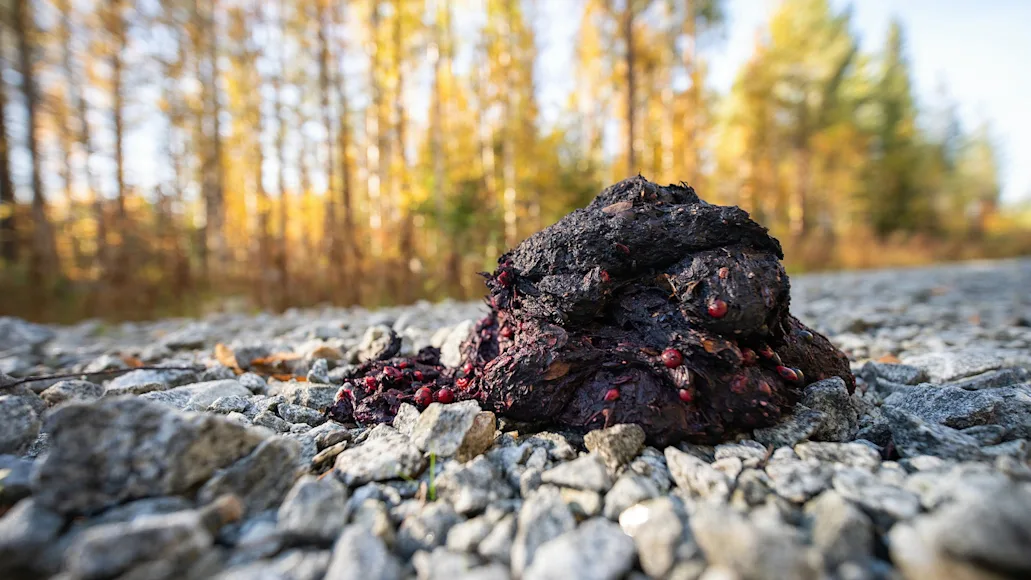Does a bear poop in the woods? It’s one of life’s big questions, right up there with “If a tree falls in the forest?” and “How much wood could a woodchuck chuck?” The answer, of course, is yes, bears most certainly do poop in the woods. And, as their population numbers and conflicts with humans rise, sometimes even in living rooms
and the backseats
of cars. The short answer: A bear poops wherever it dang well pleases. The more relevant query, though, for anyone who spends time in the outdoors: When a bear does poop in the woods, can you identify it? What does bear poop look like?
What does bear poop look like?

A loose scat spread that can’t be entirely covered by a man’s outstretched hand is a telltale sign of a bear. Adobe Stock / kellyvandellen
Bears are omnivores, and like most wild critters their diet is constantly changing with the seasons. As a result, the appearance of bear scat can vary greatly from month to month. However, there are a few characteristics to look for when determining if the droppings you’re looking at are bear sign.
Shape
Bear scat can be tube-shaped, especially when the animals emerge from hibernation in the spring and are primarily eating vegetation. Blunt ends and a slight taper are characteristic of bear turds, which tend to be less uniform in shape than those of big grazers like elk and moose. Later in the year, as bears shift to food sources like salmon and berries, droppings become rounder and wetter like bison and cow pies.
Size
An adult male black bear stands 5-6 feet tall and can sometimes top 600 pounds. Mainland grizzlies can reach 8 feet tall and 800 pounds, with coastal brown bears growing to twice that weight. So, what does bear poop look like? The bottom line is bears are big, and they leave big droppings. A loose scat spread that can’t be entirely covered by a man’s outstretched hand is a telltale sign of a bear. One that can’t be covered by your boot is likely an indicator of a truly impressive bruin. A cylindrical bear turd can be 5-12 inches long and an inch or two in diameter. Of course, smaller bears will leave smaller piles, so size isn’t everything.
Color and content
You can often tell exactly what a bear has been eating just by looking at its scat. A diet that’s heavy on grass in spring and early summer will produce droppings with a fibrous texture. In the fall, berry seeds, apple chunks, rosehips, fur and hair, and the bones and scales of fish are visible in scat piles, producing telltale clues to a local bruin’s foraging habits. Even indigestible human trash finds its way into a scavenging bear’s diet and droppings, with potentially dire results
.
Bear poop can range in color from green when the diet is dominated by grass to black and brown when bears are eating from a more varied menu.
Scent
While bear droppings that result from live kills or the scavenged remains of dead animals can smell especially rank, scat piles that are made up mostly of grass or berries have been described as fruity and “not entirely unpleasant.” The same can be said for the fecal plugs that bears pass after hibernation. More on that below.
Black Bear vs Brown Bear: What does bear poop look like?

Scat piles from similarly sized black and brown bears are pretty much indistinguishable. Adobe Stock / gubernat
North America is home to an estimated 600,000 black bears and 55,000 brown bears, and in the Lower 48, their territories overlap only in Wyoming and small parts of Idaho, Wyoming, and Washington. While there are several reliable methods
for telling the two species apart, reading scat is not among them: Scat piles from similarly sized black and brown bears are pretty much indistinguishable.
Fun Fact: What does bear poop look like?
While bears will answer nature’s call just about anywhere, the one place they rarely defecate is inside their dens during hibernation. Capable of spending more than half of the year locked down with no food intake, bears have evolved a remarkable capacity for recycling nutrients during their long winter’s nap, repurposing their pee through a process that breaks down urea by metabolizing body fat into nitrogen that is then used to rebuild protein. They also form a “fecal plug” containing fibrous plant material and bear fur. Researchers
who analyzed the contents of these plugs found that they are made up largely of intestinal secretions and cells that slough off from inside the intestinal tract even during long periods without food. Cameras positioned inside dens have shown that hibernating bears groom themselves more frequently than once thought, in the process swallowing hair and bits of bedding such as leaves and grass that pass unaltered through the digestive tract. Bears that hibernate for long periods also lick their foot pads as the callouses built up over the year begin to shed, which also contributes to the plug. As the end of hibernation nears, the fecal plug fills the lower 7-15 inches of intestine and is passed by the bear near its den entrance. Finding one of these natural souvenirs is a sign of spring in bear country.






